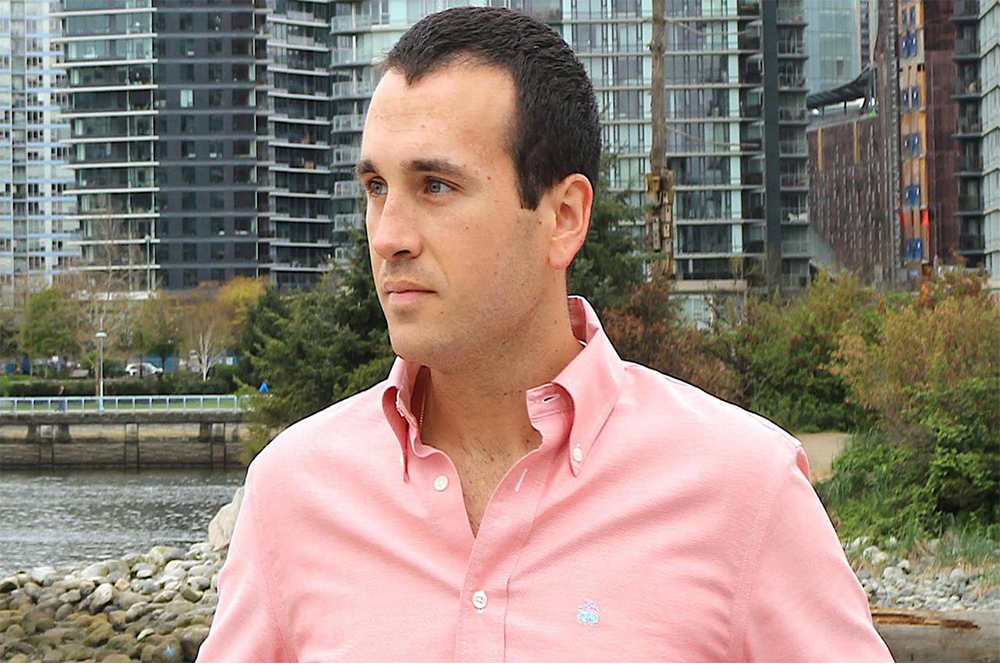Alexis Assadi “semi-retired” at the ripe age of 28. But he’s no billionaire entrepreneur, nor the son of one. He’s an investor who purchased his first stock at 19: $500 worth of Exxon Mobil for $72.39 per share. He gradually built a portfolio of income-producing assets during college and his first couple of jobs until his passive-investment income eventually exceeded his living expenses, enabling him to become financially free by his mid-twenties — or, as the title of his book puts it, Rich at 26.
He has been sharing his investment tips and tricks on his blog for several years — though he’s neither the leader of a band of get-rich-quick-scheme-hunting suckers, nor an arrogant young spendthrift with more money than sense. Now 29 and “grown up,” the Vancouver-based investor runs a financial mentorship program with almost 100 enrollees and has founded nine companies, including Assadi Capital Partners, a family office that invests his own wealth, and Pacific Income LP, which plans to raise money from outside investors. Could the young investing guru become the next Warren Buffett? Well, instead of the Buffett-perfected strategy of investing for intrinsic long-term value, Assadi scraps the “buy low, sell high” thing to focus on income investing — owning assets that provide a regular income, such as dividend-paying stocks, rent-generating real estate or even interest-earning debt. But as a report last month from Goldman Sachs proclaimed “The Death of Value [Investing],” and as direct investing and passive income take over as the new investment paradigms, Assadi might just have the vision to shape the next generation of investors.
WHILE HIS INVESTMENT THESIS MAY BE THE OPPOSITE OF BUFFETT’S, THE PAIR CERTAINLY SHARE ONE CHARACTERISTIC — A REPUTATION FOR INTENSE ATTENTION TO DETAIL.
Assadi is quick to emphasize that he comes from a privileged position — his is not a strategy that anyone could follow to financial freedom, but “anybody who is given a fair shot in life can do it,” he says. He grew up between Switzerland, Thailand, Hong Kong and Australia, following the postings of his father who worked at the Office of the UN High Commissioner for refugees, before his Persian father and Swedish mother chose to settle in Canada. It was as a poli-sci student at the University of British Columbia that a telesales call from the bank convinced the young Assadi to put his small pot of about $1,000 into a mutual fund — “to me it was everything,” he says. After realizing he had no idea where his money had gone, he started researching the fund, kick-starting a passion for investing that took him from reading the business news en route to class to researching companies during lunch breaks at his first postgrad job at his uncle’s Wall Street company. Investing was still just a hobby as he progressed from sales rep to CEO at a financial-education sales company. It was there that his investment income surpassed his living expenses, and he realized he may never need a real job again.
But after quitting to focus exclusively on his own investments — and after a revelatory moment on a Florida beach when having no emails to respond to left him feeling “alone” — Assadi realized the retired life wasn’t that fulfilling. “I don’t deserve any kind of sympathy … but that was a real struggle for me,” he says. In the months since, he has “been figuring out what I want to do when I grow up.” So far, he has set his sights on helping local companies grow through his investments, which are currently focused on direct investment, loans and real estate across Canada and Texas, and shifting his mentorship and blogging from stories about his personal finances to providing in-depth financial education for others. “I want the level of detail that I go into to be better than anyone else,” he says, adding that he wants “to be perceived as a true expert” in his specialized topics of securities law, due diligence and private equity.
And while his investment thesis of income over value may be the opposite of Buffett’s, the pair certainly share one characteristic — a reputation for intense attention to detail. “He’s the expert on due diligence. His eye for detail is something that I’ve never seen before,” says Chris Hayre, a fellow executive at Assadi’s former financial-education sales company and ongoing business partner. It’s refreshing, says Hayre, for a financial blogger to acknowledge failures as well as successes — especially when there are plenty of wins to mention. Assadi has been ahead of the curve both in investing in Vancouver’s booming real estate market — any investor in that space has “made out phenomenally well” in the last few years as “prices have gone bananas,” says Professor Thomas Davidoff from the University of British Columbia — and in pivoting from traditional assets to direct investment in private companies — something that capital has been pouring into in recent years, says Harvard Business School professor Josh Lerner.
Of course, future success is never a guarantee in investing. Direct investing is an opaque industry where a less efficient market can lead to the promise of greater returns, but it also makes the game a lot harder to perfect, while obscuring who’s winning and who’s losing, says Lerner. But the investment model is changing, and so too must our image of the ultimate investor. In a world where passive portfolios (on one end of the scale) and direct investing (on the other) replace the well-trodden paths of stock-market success, who better than an Iranian-Swedish-Canadian millennial to lead the charge?

